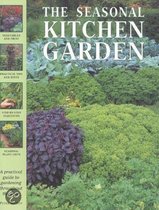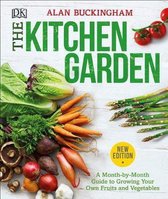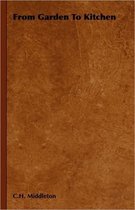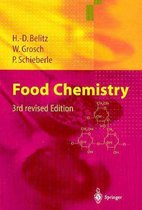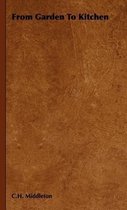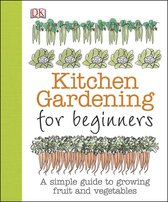Chemistry in the Kitchen Garden
Afbeeldingen
Artikel vergelijken
Auteur:
JamesR Hanson
James R. Hanson
- Engels
- Hardcover
- 9781849733236
- 09 september 2011
- 224 pagina's
Samenvatting
This book is aimed at readers with a chemical background who wish to know more about the natural products that are present in home grown fruit and vegetables.
Over the past decade there has been a resurgence of interest in growing fruit and vegetables in the garden and on allotments. Apart from the recreational, economic and environmental benefits, a major driving force has been an increasing awareness of the beneficial constituents of fruit and vegetables. Chemistry in the Kitchen Garden is aimed at readers with a chemical background who wish to know a little more about the natural products that they are eating, their beneficial effects, and the roles that these compounds have in nature. Developments in the understanding of the ecological and beneficial chemistry of fruit and vegetables have made the exploration of their chemical diversity a fascinating and expanding area of natural product chemistry and readers will obtain some 'taste' for this chemistry from the book. It develops in more detail the relevant sections from the earlier RSC book 'Chemistry in the Garden'. The book begins with an outline of the major groups of compound that are found in fruit and vegetables. This is followed by a description of aspects of environmental chemistry that contribute to the successful cultivation of these crops. Subsequent chapters deal with individual plants which are grouped in terms of the part of the plant, roots, bulbs and stems, leaves, seeds, that are used for food. The final chapters deal with fruit and herbs.
Over the past decade there has been a resurgence of interest in growing fruit and vegetables in the garden and on the allotment. Part of the driving force behind this is an increased awareness of the health benefits that can be derived from fruit and vegetables in the diet. The 'five helpings a day' dictum reflects the correlation between a regular consumption of fruit and vegetables and a reduced incidence of, for example, cardiovascular disease and some cancers. Growing your own vegetables provides the opportunity to harvest them at their peak, to minimize the time for post-harvest deterioration prior to consumption and to reduce their 'food miles'. It also provides an opportunity to grow interesting and less common cultivars. The combination of economic advantages and recreational factors add to the pleasure of growing fruit and vegetables. This book covers the natural products that have been identified in common 'home-grown' fruit and vegetables and which contribute to their organoleptic and beneficial properties. Over the last fifty years the immense advances in separation methods and spectroscopic techniques for structure elucidation have led to the identification of a wide range of natural products in fruit and vegetables. Not only have many of their beneficial properties been recognized but also their ecological roles in the development of plants have been identified. The functional role of many of these natural products is to mediate the balance between an organism and its environment in terms of microbial, herbivore or plant to plant interactions. The book is aimed at readers with a chemical background who wish to know a little more about the natural products that they are eating, their beneficial effects, and the roles that these compounds have in nature. Developments in the understanding of the ecological and beneficial chemistry of fruit and vegetables have made the exploration of their chemical diversity a fascinating and expanding area of natural product chemistry and readers will obtain some 'taste' for this chemistry from the book. It develops in more detail the relevant sections from the earlier RSC book 'Chemistry in the Garden'. The book begins with an outline of the major groups of compound that are found in fruit and vegetables. This is followed by a description of aspects of environmental chemistry that contribute to the successful cultivation of these crops. Subsequent chapters deal with individual plants which are grouped in terms of the part of the plant, roots, bulbs and stems, leaves, seeds, that are used for food. The final chapters deal with fruit and herbs. The epilogue considers some general aspects of ecological chemistry and climatic stress which may, in the future, affect the growth of fruit and vegetables in the garden particularly in the context of potential climate changes. The book concludes with a section on further reading, a glossary of terms used in plant chemistry and a list of the common fruit and vegetables grouped in their plant families.
Over the past decade there has been a resurgence of interest in growing fruit and vegetables in the garden and on allotments. Apart from the recreational, economic and environmental benefits, a major driving force has been an increasing awareness of the beneficial constituents of fruit and vegetables. Chemistry in the Kitchen Garden is aimed at readers with a chemical background who wish to know a little more about the natural products that they are eating, their beneficial effects, and the roles that these compounds have in nature. Developments in the understanding of the ecological and beneficial chemistry of fruit and vegetables have made the exploration of their chemical diversity a fascinating and expanding area of natural product chemistry and readers will obtain some 'taste' for this chemistry from the book. It develops in more detail the relevant sections from the earlier RSC book 'Chemistry in the Garden'. The book begins with an outline of the major groups of compound that are found in fruit and vegetables. This is followed by a description of aspects of environmental chemistry that contribute to the successful cultivation of these crops. Subsequent chapters deal with individual plants which are grouped in terms of the part of the plant, roots, bulbs and stems, leaves, seeds, that are used for food. The final chapters deal with fruit and herbs.
Over the past decade there has been a resurgence of interest in growing fruit and vegetables in the garden and on the allotment. Part of the driving force behind this is an increased awareness of the health benefits that can be derived from fruit and vegetables in the diet. The 'five helpings a day' dictum reflects the correlation between a regular consumption of fruit and vegetables and a reduced incidence of, for example, cardiovascular disease and some cancers. Growing your own vegetables provides the opportunity to harvest them at their peak, to minimize the time for post-harvest deterioration prior to consumption and to reduce their 'food miles'. It also provides an opportunity to grow interesting and less common cultivars. The combination of economic advantages and recreational factors add to the pleasure of growing fruit and vegetables. This book covers the natural products that have been identified in common 'home-grown' fruit and vegetables and which contribute to their organoleptic and beneficial properties. Over the last fifty years the immense advances in separation methods and spectroscopic techniques for structure elucidation have led to the identification of a wide range of natural products in fruit and vegetables. Not only have many of their beneficial properties been recognized but also their ecological roles in the development of plants have been identified. The functional role of many of these natural products is to mediate the balance between an organism and its environment in terms of microbial, herbivore or plant to plant interactions. The book is aimed at readers with a chemical background who wish to know a little more about the natural products that they are eating, their beneficial effects, and the roles that these compounds have in nature. Developments in the understanding of the ecological and beneficial chemistry of fruit and vegetables have made the exploration of their chemical diversity a fascinating and expanding area of natural product chemistry and readers will obtain some 'taste' for this chemistry from the book. It develops in more detail the relevant sections from the earlier RSC book 'Chemistry in the Garden'. The book begins with an outline of the major groups of compound that are found in fruit and vegetables. This is followed by a description of aspects of environmental chemistry that contribute to the successful cultivation of these crops. Subsequent chapters deal with individual plants which are grouped in terms of the part of the plant, roots, bulbs and stems, leaves, seeds, that are used for food. The final chapters deal with fruit and herbs. The epilogue considers some general aspects of ecological chemistry and climatic stress which may, in the future, affect the growth of fruit and vegetables in the garden particularly in the context of potential climate changes. The book concludes with a section on further reading, a glossary of terms used in plant chemistry and a list of the common fruit and vegetables grouped in their plant families.
Productspecificaties
Wij vonden geen specificaties voor jouw zoekopdracht '{SEARCH}'.
Inhoud
- Taal
- en
- Bindwijze
- Hardcover
- Oorspronkelijke releasedatum
- 09 september 2011
- Aantal pagina's
- 224
- Illustraties
- Nee
Betrokkenen
- Hoofdauteur
- JamesR Hanson
- Tweede Auteur
- James R. Hanson
- Hoofduitgeverij
- Royal society of chemistry
Overige kenmerken
- Extra groot lettertype
- Nee
- Product breedte
- 156 mm
- Product hoogte
- 1.90 cm
- Product lengte
- 234 mm
- Studieboek
- Nee
- Verpakking breedte
- 156 mm
- Verpakking hoogte
- 241 mm
- Verpakking lengte
- 234 mm
- Verpakkingsgewicht
- 0.48 kg
EAN
- EAN
- 9781849733236
Je vindt dit artikel in
- Categorieën
- Taal
- Engels
- Boek, ebook of luisterboek?
- Boek
- Beschikbaarheid
- Leverbaar
- Studieboek of algemeen
- Studieboeken
Kies gewenste uitvoering
Kies je bindwijze
(2)
Prijsinformatie en bestellen
De prijs van dit product is 28 euro en 99 cent.
2 - 3 weken
Verkoop door bol
- Prijs inclusief verzendkosten, verstuurd door bol
- Ophalen bij een bol afhaalpunt mogelijk
- 30 dagen bedenktijd en gratis retourneren
- Dag en nacht klantenservice
Rapporteer dit artikel
Je wilt melding doen van illegale inhoud over dit artikel:
- Ik wil melding doen als klant
- Ik wil melding doen als autoriteit of trusted flagger
- Ik wil melding doen als partner
- Ik wil melding doen als merkhouder
Geen klant, autoriteit, trusted flagger, merkhouder of partner? Gebruik dan onderstaande link om melding te doen.

